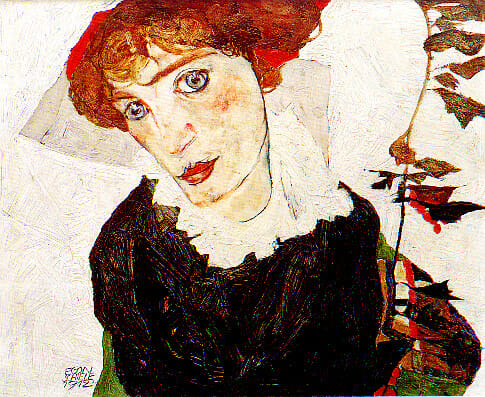
“Injustice upon injustice upon injustice” is how one interviewee describes the saga behind Portrait of Wally, a 1912 painting by Egon Schiele of his mistress Valerie “Wally” Neuzil. Much of Schiele’s work is quite provocative, not just nude but erotic, viewed by some as pornographic and grotesque. But Andrew Shea’s inciting documentary is less a biography about the Expressionist figurative artist (in fact, little is said about Schiele’s short life at all) than his most controversial work—a work controversial not for its subject matter but for its history of ownership.
Wally’s story begins with Lea Bondi, a Jewish art dealer whose gallery in Vienna, Austria, featured Schiele’s work. The Portrait, though, was her personal property and hung in her home, so when Friedrich Welz acquired her business through the Aryanization of Jewish industry after Hitler’s arrival in the city in 1938 (the Austrians’ welcome of which is briefly criticized in the film), his taking of her beloved artwork under duress was not a wrong she forgot or forgave.
After the war, Bondi reclaimed her gallery (after paying Welz for “renovations”), but by that time Wally had erroneously made its way into the collection of Dr. Heinrich Rieger, a concentration camp victim whose collection was turned over to the Austrian National Gallery. Detailed documentation suggests that museum officials recognized the mistake but did nothing to correct it. Bondi turned to Rudolph Leopold, an obsessive Schiele collector, to help her reclaim it. Instead, he bought it for himself and added it to Vienna’s Leopold Museum.
When the Museum of Modern Art (MoMA) in New York borrowed and displayed the piece at an exhibition in 1997, Wally’s disputed ownership drew the attention of the American press, the Manhattan district attorney and the United States government, triggering a 13-year legal battle that ensnared the European and American art establishment, U.S. politicos and National Political Radio in its web.
Shea retraces this drama, colored by some of the darkest moments in world history, through interviews with Bondi’s heirs (she died in 1969) and industry observers close to the story, as well as letters and other documentation in Bondi’s own words, which make it clear that she was devastated by the loss. Dynamic visuals include details of Schiele’s work and extensive archival footage from the era that give the scandal a visceral context. Meanwhile, Gary Lionelli’s modernist score infuses mystery throughout. All told, there’s a whiff of The Third Man about Portrait of Wally.
In hindsight, a situation as complex Wally’s could not be resolved satisfactorily, and indeed, there’s an air of discontent around the outcome of the case and an uncomfortable demonization of an old lady. But there’s also outrage at the perpetrators of the original crime and the perpetuators of it, hiding behind a defense of high art. It is infuriating that the grinning one percent (Shea is selective in the photographs he chooses to represent them) would accuse the victims of greed when in fact they’re willing to throw money at the problem to make it go away. Wally’s triumph, one that is alluded to rather than explored, is that it pitted the law against morality and paved the way for wider restitution of art wrested by the Nazis from the rightful Jewish owners.
Director: Andrew Shea
Writers: Andrew Shea, David D’Arcy
Release Date: May 11, 2012